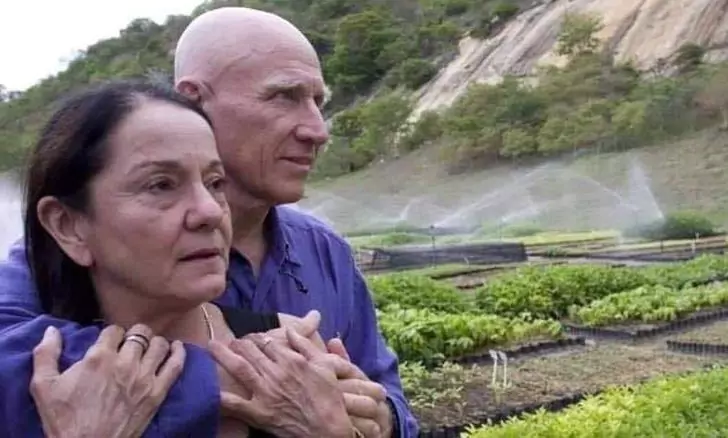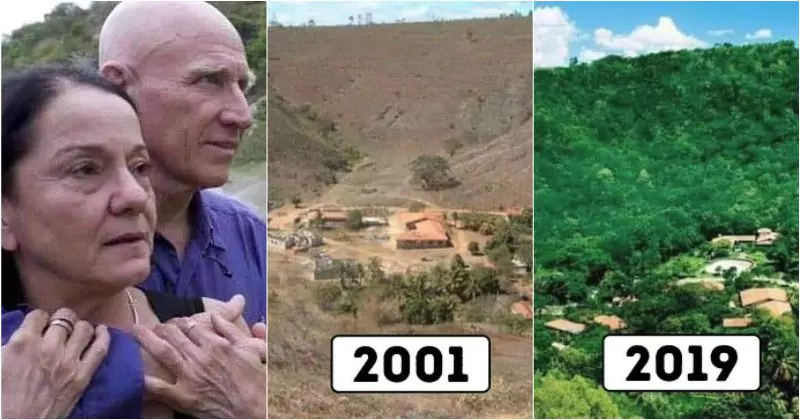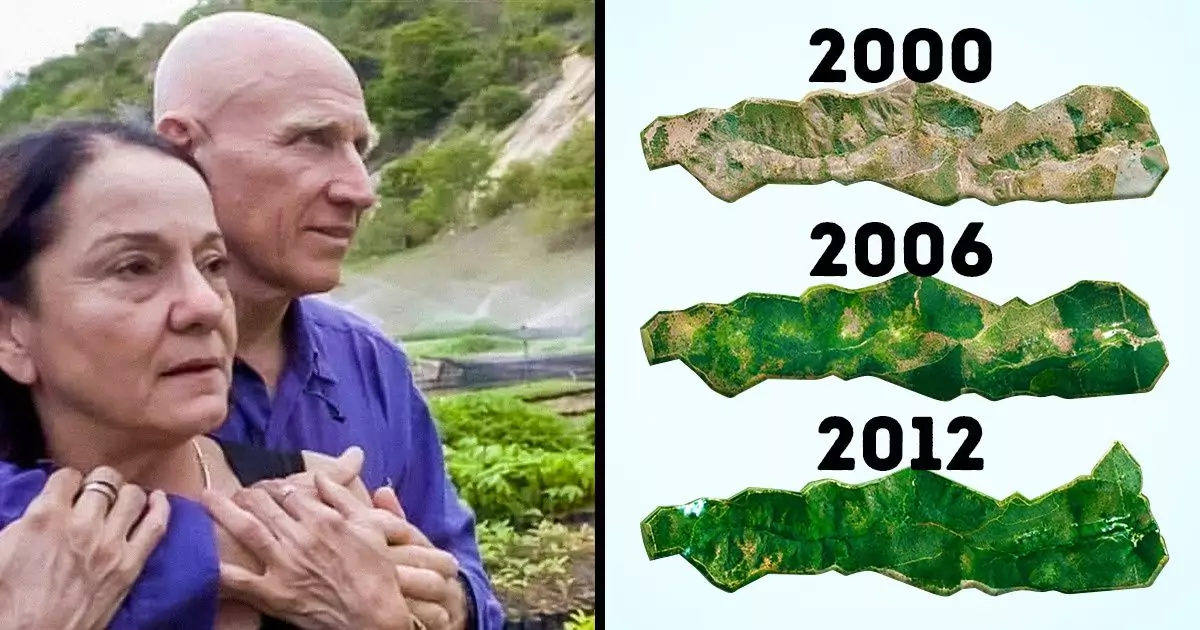How a Couple Restored a Brazilian Forest and Brought Back Wildlife in 20 Years
Have you ever wondered if it is possible to reverse the damage caused by deforestation and restore a forest to its original glory? Well, that’s exactly what a Brazilian couple did, and the results are amazing.
In this article, we will tell you the inspiring story of Sebastião Salgado and Lélia Deluiz Wanick Salgado, who planted over 2 million trees and transformed a barren land into a lush green forest that is home to hundreds of species of animals and plants. We will also share some of the benefits of reforestation and how you can get involved in this noble cause.
Who are Sebastião Salgado and Lélia Deluiz Wanick Salgado?
Sebastião Salgado is a renowned photojournalist who has traveled to over 120 countries and documented the social and environmental issues of our time. His work has been published in numerous books and magazines, and exhibited around the world. He has won many awards and honors for his photography, including the W. Eugene Smith Memorial Fund Grant, the Royal Photographic Society’s Centenary Medal, and the UNICEF Goodwill Ambassador.

Lélia Deluiz Wanick Salgado is his wife and partner, who is also an architect and designer. She is the director of Amazonas Images, the agency that represents Sebastião’s work. She is also the curator and editor of his books and exhibitions. She shares his passion for nature and social justice, and has been instrumental in the creation and management of the Instituto Terra, the organization that oversees their reforestation project.
How did they restore a forest in Brazil?
The story begins in 1994, when Sebastião returned to his native Brazil after covering the genocide in Rwanda. He was emotionally and physically exhausted, and hoped to find some peace and comfort in his family’s farm in the state of Minas Gerais. However, he was shocked and saddened to see that the land he remembered as a tropical paradise was now a barren and lifeless wasteland. Decades of deforestation, erosion, and drought had destroyed the forest and driven away the wildlife

But his wife Lélia had a vision. She suggested that they could replant the forest and bring back the life that was lost. Sebastião agreed, and they decided to dedicate themselves to this ambitious and noble mission. They sold their cattle, acquired the neighboring lands, and founded the Instituto Terra in 1998. The Instituto Terra is a non-profit organization that aims to promote the recovery and sustainable development of the Atlantic Forest, one of the most biodiverse and threatened ecosystems in the world.
With the help of many partners, donors, volunteers, and local communities, the Instituto Terra began to plant native saplings on the 1,502 acres of land that they owned. They also built a nursery that produces over 1 million seedlings of 290 species per year. They hired and trained local workers, many of whom were former loggers or charcoal producers, to take care of the planting and maintenance of the forest. They also implemented educational and research programs to raise awareness and knowledge about the importance of environmental conservation
The results were astonishing. In 20 years, they planted over 2 million trees, and restored the forest to its original state. The forest attracted hundreds of species of animals, including birds, mammals, reptiles, amphibians, and insects, many of which were endangered or extinct in the region. The forest also improved the soil quality, water availability, and climate regulation, benefiting not only the wildlife, but also the human population. The forest became a model of ecological restoration and a source of inspiration for many other projects around the world.
What are the benefits of reforestation?
Reforestation is the process of planting trees in areas that have been deforested or degraded, with the purpose of restoring the ecological functions and services of the forest. Reforestation has many benefits, both for the environment and for the society. Some of the benefits are:
- Reforestation reduces greenhouse gas emissions and mitigates climate change. Trees absorb carbon dioxide from the atmosphere and store it in their biomass, reducing the amount of greenhouse gases that contribute to global warming. Trees also release oxygen, which is essential for life. According to a study by ETH Zurich, planting a trillion trees could potentially capture two-thirds of the carbon that humans have released since the Industrial Revolution.
- Reforestation conserves biodiversity and protects endangered species. Forests are home to more than 80% of the world’s terrestrial biodiversity, hosting millions of species of plants, animals, and microorganisms. Many of these species are endemic, meaning that they are found only in a specific region or habitat. Forests also provide food, shelter, and habitat for many endangered species, such as the jaguar, the giant panda, and the orangutan. Reforestation helps to preserve the genetic diversity and evolutionary potential of these species, and to prevent their extinction.
- Reforestation improves water quality and availability. Forests play a vital role in the hydrological cycle, regulating the flow and quality of water. Trees capture and store rainwater, reducing runoff and erosion, and preventing floods and landslides. Trees also filter and purify water, removing pollutants and sediments, and improving the water quality for human consumption and agriculture. Trees also recharge groundwater and aquifers, increasing the water availability and resilience to droughts.
- Reforestation enhances soil fertility and productivity. Forests improve the soil quality and health, by adding organic matter, nutrients, and microorganisms. Trees also prevent soil erosion and compaction, by stabilizing the soil structure and creating a protective layer of leaf litter and roots. Trees also increase the soil moisture and aeration, by creating shade and reducing evaporation. These factors enhance the soil fertility and productivity, supporting agriculture and food security.
- Reforestation supports socio-economic development and well-being. Forests provide many goods and services that are essential for human livelihoods and well-being. Forests provide timber, fuelwood, fiber, food, medicine, and other non-timber forest products, generating income and employment for millions of people, especially in rural areas. Forests also provide ecosystem services, such as pollination, pest control, climate regulation, and recreation, contributing to human health and happiness. Forests also have cultural and spiritual values, being a source of inspiration, knowledge, and identity for many indigenous and local communities.
How can you get involved in reforestation?
Reforestation is a global challenge and a shared responsibility. Everyone can play a role and make a difference, by taking action and supporting reforestation efforts. Here are some ways you can get involved in reforestation:
- Plant a tree. One of the simplest and most effective ways to support reforestation is to plant a tree. You can plant a tree in your backyard, in your community, or in a nearby forest. You can also join or organize a tree-planting event, and invite your friends, family, or colleagues to participate. You can also donate or sponsor a tree, and support a reforestation organization or project that will plant a tree on your behalf.
- Reduce your impact. Another way to support reforestation is to reduce your impact on the environment, and avoid activities that contribute to deforestation and degradation. You can reduce your impact by using less paper and wood products, and choosing recycled or certified products. You can also reduce your energy consumption and greenhouse gas emissions, and switch to renewable sources of energy. You can also reduce your waste and pollution, and adopt a more sustainable lifestyle.
- Raise your voice. A third way to support reforestation is to raise your voice and awareness, and advocate for forest conservation and restoration. You can raise your voice by educating yourself and others about the importance and benefits of reforestation, and sharing information and stories through social media, blogs, or podcasts. You can also raise your voice by signing petitions, joining campaigns, or contacting your representatives, and demanding action and policies that protect and restore forests. You can also raise your voice by celebrating and honoring forests, and participating in events such as the International Day of Forests or the World Environment Day.
Conclusion
We hope this article has inspired you to learn more about reforestation and how you can get involved. Reforestation is not only a way to restore a forest, but also a way to restore life. As Sebastião Salgado said: “We need to listen to the words of the people on the land. Nature is the earth and it is other beings and if we don’t have some kind of spiritual return to our planet, I fear that we will be compromised.”

